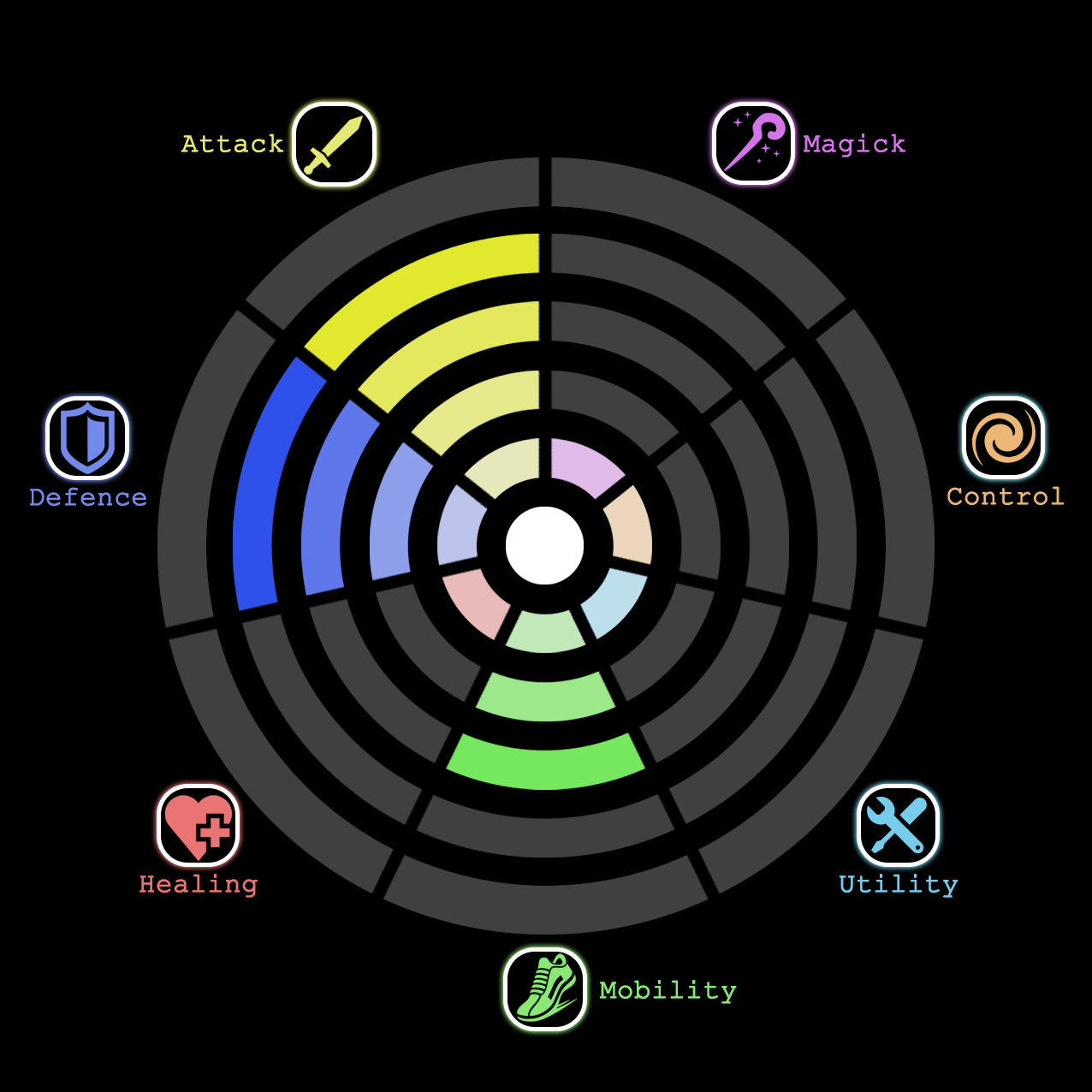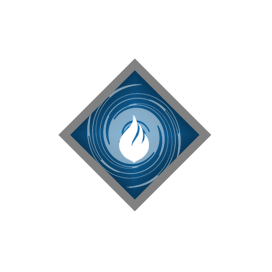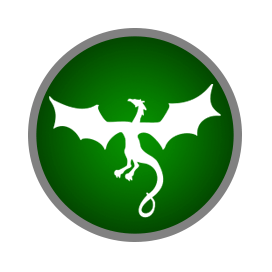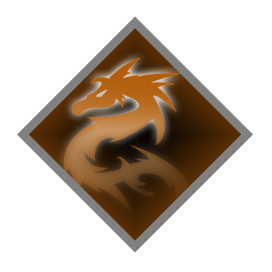

Of all the things that are symbolic, few are more recognized than the Dragoon. Born amidst the timeless conflict between men and dragons, these lance-wielding knights have developed an aerial style of combat, that they might better pierce the scaled hides of their mortal foes.
Since then, the role of Dragoons have changed. No longer are Dragoons merely a class with a focus on defeating dragons, but some take advantage of this training and attunement to align themselves with the dragons they study — even protect the dragons that this class once historically hunted.
No matter what their reasons, Dragoons take to the heavens as though it were an extension of the land, they descend upon the enemy with every ounce of their bodies behind the blow. It is this penetrative power, along with their devotion to learning the way of the dragon, that characterizes the Dragoon.
Hit Points (HP)
| Hit Dice |
1d10 per level |
| HP at Level 1 |
10 + CON modifier |
| HP at higher levels |
1d10 (or 5) + CON modifier per level |
Proficiencies
| Armour |
Light armour, medium armour, shields |
| Weapons |
Simple weapons, martial weapons |
| Tools |
None |
| Saving Throws |
Strength, Constitution |
| Skills |
Choose two from Acrobatics, Animal Handling, Athletics, Intimidation, Medicine, Perception, Religion, and Survival |
Dragoon Table
| Level |
Proficiency Bonus |
Abilities |
Skills Known |
High Jump (L = Dragoon Level; S = STR modifier) |
| 1 |
+2 |
Draconic Discipline, Dragon Points, Jump, Weapon Mastery |
1 |
0.5L + 0.5S |
| 2 |
+2 |
Fighting Style |
2 |
0.5L + 0.5S |
| 3 |
+2 |
Dragon Breath |
3 |
0.5L + S |
| 4 |
+2 |
Ability Score Improvement |
4 |
0.5L + S |
| 5 |
+3 |
Extra Attack, Draconic Discipline (2) |
5 |
0.5L + 1.5S |
| 6 |
+3 |
Dragon Breath (2), Attack of Opportunity* |
6 |
0.5L + 1.5S |
| 7 |
+3 |
— |
7 |
0.5L + 1.5S |
| 8 |
+3 |
Ability Score Improvement |
8 |
0.5L + 1.5S |
| 9 |
+4 |
Dragon Breath (3) |
9 |
0.5L + 1.5S |
| 10 |
+4 |
— |
10 |
0.5L + 1.5S |
| 11 |
+4 |
Draconic Resilience |
11 |
0.5L + 1.5S |
| 12 |
+4 |
Ability Score Improvement |
12 |
0.5L + 2S |
| 13 |
+5 |
— |
13 |
0.5L + 2S |
| 14 |
+5 |
Dragon Flight |
14 |
0.5L + 2S |
| 15 |
+5 |
— |
15 |
0.5L + 2S |
| 16 |
+5 |
Ability Score Improvement |
16 |
0.5L + 2S |
| 17 |
+6 |
— |
17 |
0.5L + 2.5S |
| 18 |
+6 |
Dragon Breath (4) |
18 |
0.5L + 2.5S |
| 19 |
+6 |
Ability Score Improvement |
19 |
0.5L + 2.5S |
| 20 |
+6 |
Dragonheart |
20 |
0.5L + 2.5S |
Equipment
You start with the following equipment, in addition to the equipment granted by your background:
- (a) scale mail or (b) leather armour, a simple weapon, and five javelins
- (a) a martial weapon and a shield or (b) two martial weapons
- (a) a dungeoneer's pack or (b) an explorer's pack
Or, you could choose to start with 5d4 × 10 gp and purchase your equipment.
Class Abilities
Draconic Discipline
At 1st Level, you choose one type of dragon as the one in which you base your skills and form as a Dragoon. The damage type associated with each dragon is used by skills you gain later. Additionally, you can speak, read, and write Draconic. Further, whenever you make a CHA check when interacting with dragons, you have Advantage.
At 5th Level, the draconic magicks suffuse your eyes, turning them the colour of your type of dragon. As an action, you can cause your eyes to glow for 1 minute, in a similar way to the Thaumaturgy cantrip. You can dismiss this effect as an action.
Dawn Dragons
Dawn dragons are known to be very lawful and are a symbol of justice in many parts. With warm hues, many of the dragons here are good aligned, and find themselves the object of worship in certain religions for the times that they have helped humanity. However, there are some dawn dragons who are more evil inclined, but even such dragons usually follow a code of some kind amongst themselves.
Twilight Dragons
Twilight dragons are very neutral, and often choose not to make much interaction at all with society. These dragons all have cold and pale hues, and usually find themselves simply seeking to have dominion over a particular area, and being content with amassing some wealth. Because of this, they are often seen as a symbol of fortune and prosperity. While they do not busy themselves amongst society, there are occasions where they will come down from their domain to investigate. Such is the infrequency that they are usually not up to date with societal changes.
Dusk Dragons
Dusk dragons are often seen as vicious and terrifying. But the same could be said for all dragons. Although many people associate such dragons with evil inclination, they are not necessarily so. Generally, they are viewed this way because of their tendency to be ignore laws and live for their own freedom, which has resulted in the destruction of villages in the past. They are thus viewed as a symbol of wrath and power. There are such dusk dragons who are good, however, they tend to take justice into their own hands and what they think is best, rather than following the command of the current rule.
| Dawn Dragons |
Twilight Dragons |
Dusk Dragons |
| Dragon |
Damage Type |
Dragon |
Damage Type |
Dragon |
Damage Type |
| Gold |
HOLY |
Blue |
WATER |
Black |
DARK |
| Red |
FIRE |
Silver |
WIND |
Green |
POISON |
| Yellow |
LIGHTNING |
White |
ICE |
Violet |
ACID |
Dragon Points
When you become a Dragoon, you learn to harness the ancient draconic energy that empowers dragons to fuel some of your Dragoon skills. This is represented by a resource known as Dragon Points (DP). Your maximum DP are equal to your Dragoon Level and you replenish your DP every time you finish a short or long rest.
Some skills might require a creature to make a saving throw. Unless otherwise stated, the saving throw DC of your Dragoon skills is as follows, because their power is dependent on your ability to commune with the natural energies that empower these draconic skills:
Dragoon save DC = 8 + your proficiency bonus + your Wisdom modifier
Jump
The iconic ability of the Dragoon class. With this skill, even airborne creatures must fear the wrath of a skilled Dragoon. Your high jump distances are passively increased as shown on the Dragoon table (but remember that you cannot jump higher than your speed would allow). Furthermore, any fall damage that you take while you are not
is reduced by half.
As an action, even if you do not have the movement to do so, you may high jump up to a number of metres equal to twice your normal high jump distance (minimum jump distance is 3m) and remain magickally hovering there until the end of your next turn. While hovering, in this way, you are immune to being knocked
.
Furthermore, once on your turn, if you take the Attack action you are airborne, you can choose to swiftly descend as a free action, striking a creature upon finishing on your descent. During your descent, you may move up to half of your jump distance (moving in this way doesn't consume any of your movement). Make a melee weapon attack against a target as you descend. On hit, you regain 1 DP and the attack deals an extra 1d6 damage for every 3m you have descended (max. 10d6 extra damage). If you are performing the weapon attack using a Glaive, Halberd, Pike, Spear, or Lance, you have Advantage on this attack roll. A creature that is struck by this attack must succeed on a STR saving throw (DC = 8 + your proficiency + your STR modifier) or be knocked
.
After the descent, you may jump to another position within 4m of the target, not provoking attacks of opportunity.
You do not take any fall damage from this descent, unless your DM determines otherwise (For example, if you try to make a landing on a very unfavourable terrain, you might have you make a DEX (Acrobatics) check to lessen the damage from the fall).
Weapon Mastery
Your training with weapons allows you to use the mastery properties of two kinds of weapons of your choice with which you have proficiency, such as Longswords and Javelins.
Whenever you finish a Long Rest, you can change the kinds of weapons you chose. For example, you could switch to using the mastery properties of Halberds and Flails.
Fighting Style
At Level 2, you adopt a particular style of fighting as your specialty. Choose one of the following options. You can't take a Fighting Style option more than once.
Defense
While you are wearing armour, you gain a +1 bonus to AC.
Duelling
When you are wielding a melee weapon in one hand and no other weapons (a shield does not count as a weapon), you gain a +2 bonus to damage rolls with that weapon.
Great Weapon Fighting
When you roll a 1 or 2 on a damage die for an attack you make with a melee weapon that you are wielding with two hands, you can reroll the die and must use the new roll, even if the new roll is a 1 or a 2. The weapon must have the two-handed or versatile property for you to gain this benefit.
Protection
When a creature you can see hits a target other than you that is within 4m of you, you can use your reaction to move 2m towards the target. If you are now within 2m of the target, you can force the attacker to reroll its attack roll and take the lower roll. You must be wielding a shield to use this reaction.
Dragon Breath
At 3rd Level, using your training under the Dragon type you studied, you have learned to harness its energy to exhale destructive energy. When you take the Attack action on your turn, you can expend 2 DP and replace one of your attacks with an exhalation of this magickal destructive energy. Each creature in the area must make a saving throw, and both the area and save is determined by your Draconic Discipline, as shown in the table below.
A creature takes 2d8 + WIS modifier damage on a failed save, and half as much damage on a successful one. The damage increases to 3d8 at 6th Level, 4d8 at 9th Level, and 5d8 at 18th Level. Furthermore, at 9th Level, the area of effect increases to either a 12m Cone, or a 4m by 20m long Line, and atg 18th Level, the area of the effect increases to either a 20m Cone, or a 4m by 40m long Line
Breath Weapon Table
| Dragon |
Damage Type |
Area of Effect |
Saving Throw |
| Black |
DARK |
Cone (6m) |
Constitution |
| Blue |
WATER |
Line (2m wide, 10m long) |
Strength |
| Gold |
HOLY |
Cone (6m) |
Dexterity |
| Green |
POISON |
Cone (6m) |
Constitution |
| Red |
FIRE |
Cone (6m) |
Dexterity |
| Silver |
WIND |
Line (2m wide, 10m long) |
Strength |
| Violet |
ACID |
Line (2m wide, 10m long) |
Dexterity |
| White |
ICE |
Cone (6m) |
Constitution |
| Yellow |
LIGHTNING |
Line (2m wide, 10m long) |
Dexterity |
Ability Score Improvement
At Levels 4, 8, 12, 16, and 19, you can increase one ability score of your choice by 2, or you can increase two ability scores of your choice by 1. As normal, you can't increase an ability score above 20 using this skill.
You can forgo taking this feature to take a Feat of your choice instead.
Extra Attack
At Level 5, you can attack twice, instead of once, whenever you take the Attack action on your turn.
Attack of Opportunity*
From 6th Level onwards, you are able to train yourself to take advantage of any drop in guard of your enemies. You can choose to forgo spending a skill point to learn the Attack of Opportunity reaction below:
Reaction Trigger: A creature within your reach makes a ranged attack, leaves a square during its movement, or casts a spell with somatic (S) or material (M) components.
Effect: Make a melee weapon attack against the creature.
*Attack of Opportunity variant: You can only learn this feature if you are using this variant.
Draconic Resilience
By Level 11, you are able to tap into the innate defences of the Draconic Discipline that you specialise in.
You gain maximum HP equal to twice your Level when you attain this skill. Further, increase your maximum HP by 2 for every subsequent level you gain in this class.
Also, you increase your resistance stage to the damage type of your chosen Draconic Discipline by 1.
Dragon Flight
At Level 14, you gain the ability to sprout a pair of dragon wings from your back, gaining a flying speed equal to your current speed. You can create these wings as a bonus action on your turn by spending 3 DP. They last for 1 hour or until you dismiss them as a bonus action on your turn. The colour of the dragon wings correspond to the dragon type you chose for your Draconic Discipline.
You can't manifest your wings while wearing armour unless the armour is made to accommodate them, and clothing not made to accommodate your wings might be destroyed when you manifest them.
Dragonheart
At Level 20, you have unlocked the incredible tenacity and fortitude of dragons. Whenever you are brought to 0 HP or are killed outright, you can instead bring yourself back from the brink of death and your current HP becomes half of your maximum HP. All hostile creatures within 6m of you must succeed on a DEX saving throw or else take 6d6 damage of the damage type of your Draconic Discipline, as energy suffuses and emits from you. They take half damage on a successful save. This ability can only be used once every long rest.




 Lancer
Lancer













 Aerial Ace
Aerial Ace












 Wind Warrior
Wind Warrior










 Dragonspeaker
Dragonspeaker










